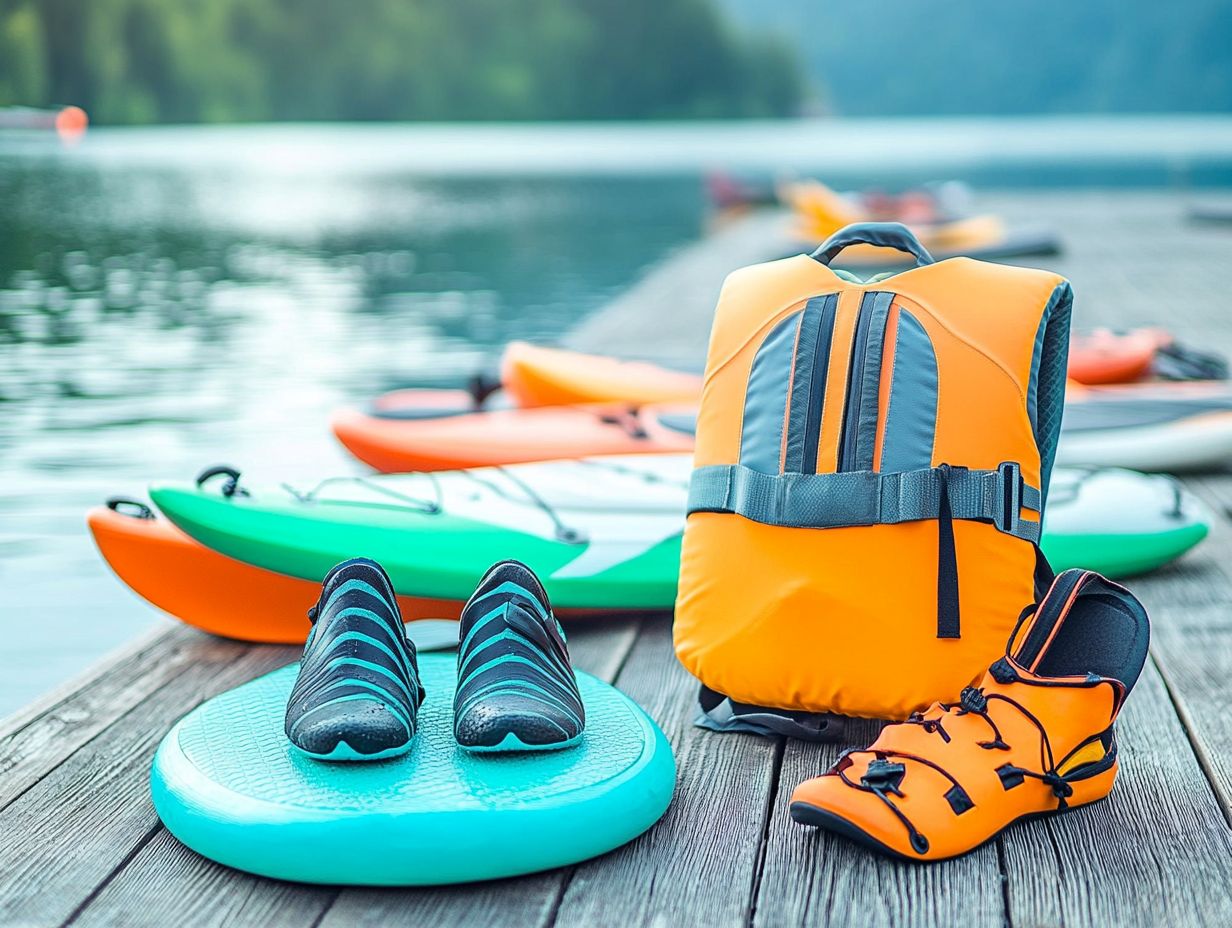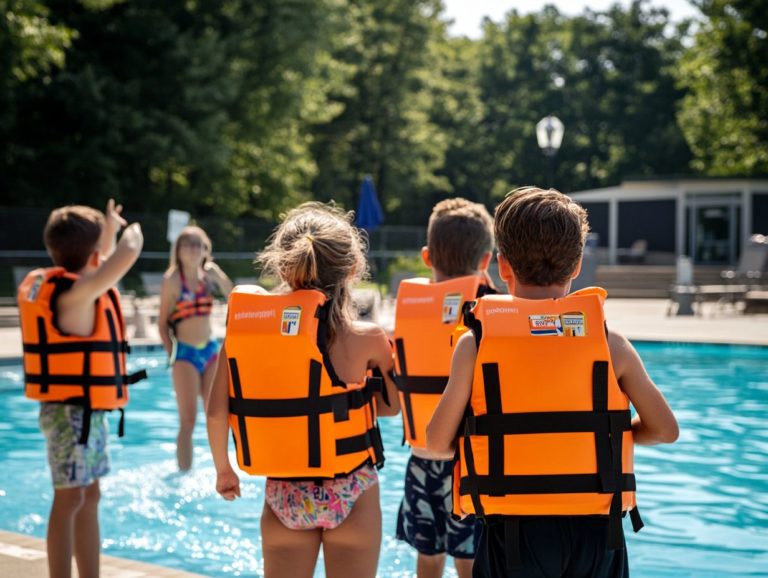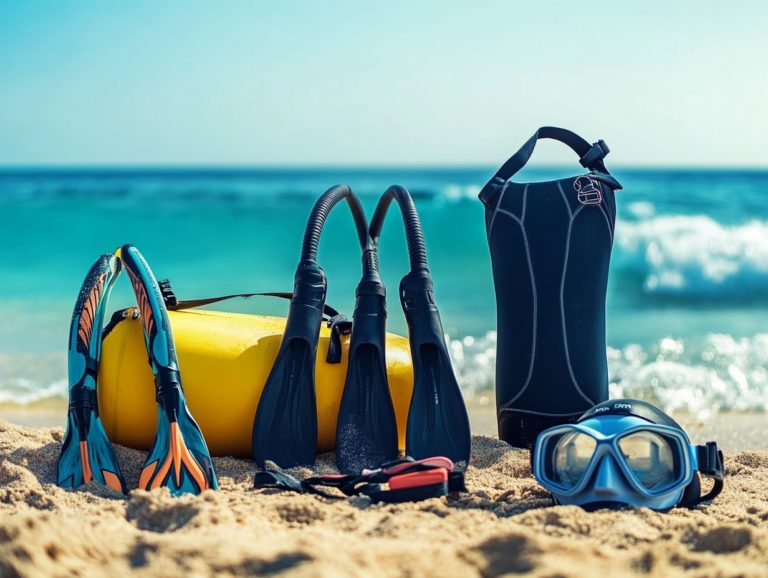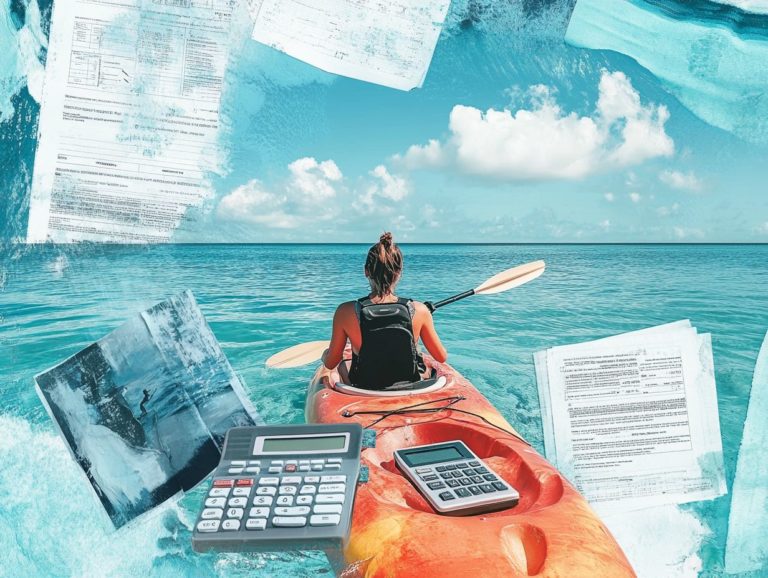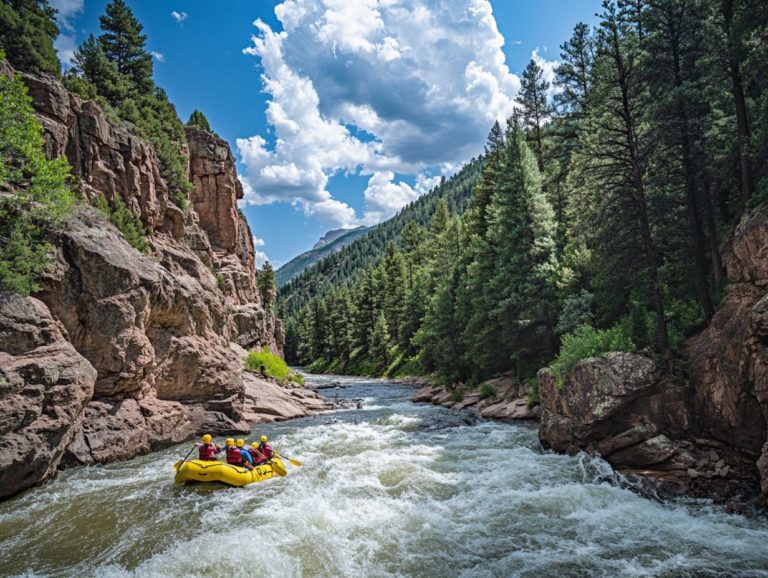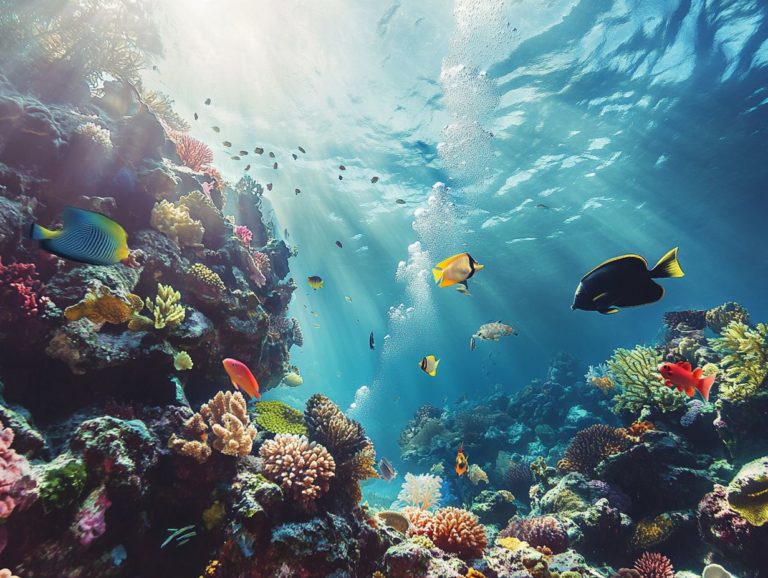Essential Safety Gear for Water Sports
Engaging in water sports offers an exhilarating way to immerse yourself in nature, yet safety should always be your top priority.
Having the right safety gear is essential, not just to elevate your experience but also to protect yourself and your companions from potential hazards.
This article guides you in selecting the right equipment for your specific sport, along with tips for maintaining it, ensuring that you re perpetually prepared for your next adventure.
Contents
- Key Takeaways:
- The Importance of Safety Gear for Water Sports
- Types of Safety Gear for Water Sports
- Choosing the Right Safety Gear for Your Activity
- Maintaining and Using Safety Gear Properly
- Frequently Asked Questions
- What are the essential safety gear for water sports?
- Do I need to wear a life jacket for all water sports?
- Why is a helmet important for water sports?
- What should be included in a first aid kit for water sports?
- Are there any specific safety gear requirements for different water sports?
- Can I rent safety gear for water sports?
Key Takeaways:
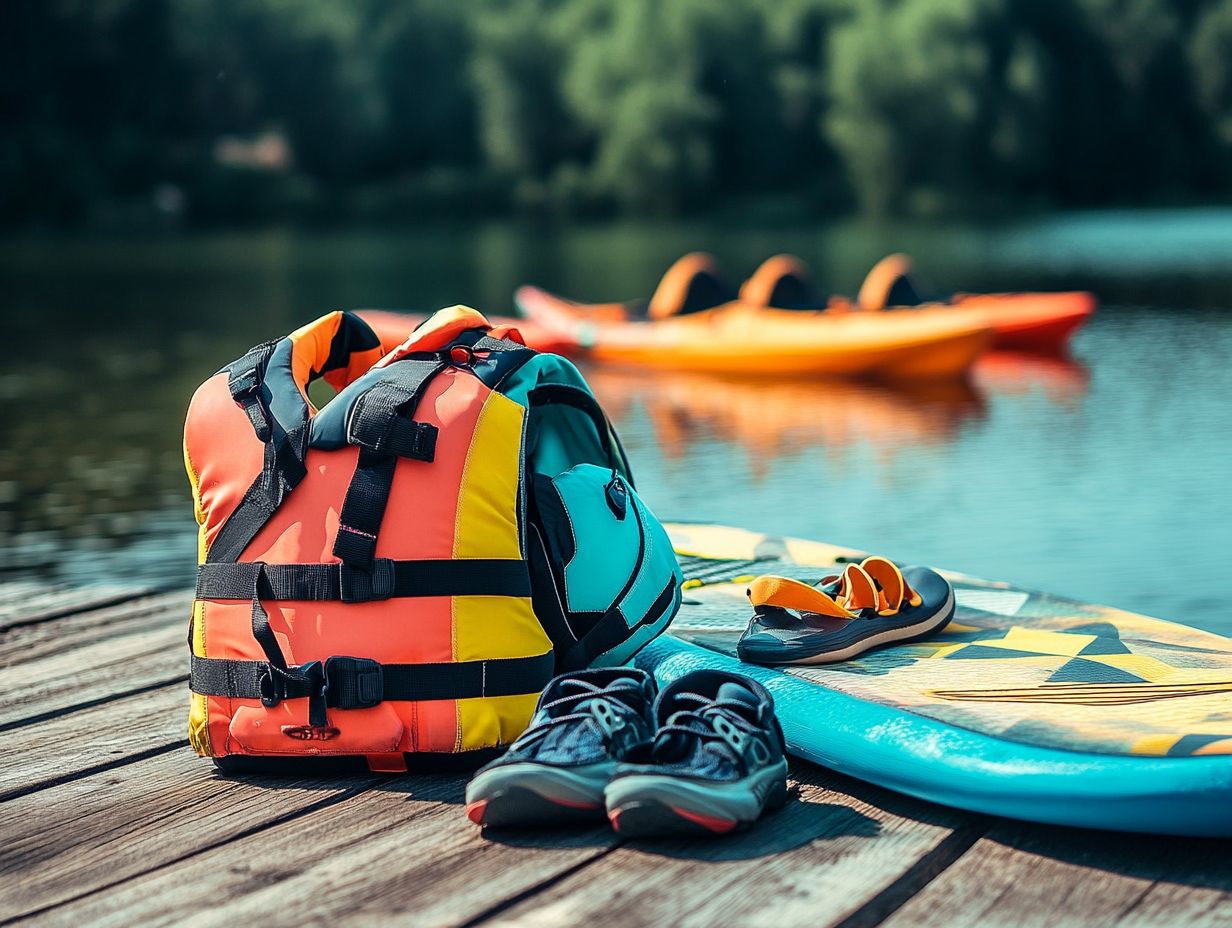
- Proper safety gear is crucial for all water sports activities to ensure the safety of participants.
- Essential safety gear includes life jackets, protective clothing, and communication devices for emergency situations.
- When choosing safety gear, consider the activity, personal abilities, and conditions of the water to ensure maximum protection.
The Importance of Safety Gear for Water Sports
The significance of safety gear for water sports is paramount, as it directly impacts both your well-being and adherence to U.S. Coast Guard regulations.
Equipping yourself with proper boating safety gear, including life jackets and personal flotation devices (PFDs), is crucial for anyone who enjoys activities like recreational boating, kayaking, or water skiing.
Conducting a thorough vessel safety check a check to ensure your boat is safe to use along with a detailed safety checklist can help you pinpoint the necessary equipment for a secure and enjoyable outing on the water.
Why Proper Gear is Essential
Proper gear is crucial for your boating safety, as it significantly reduces the risk of accidents and fatalities while you indulge in water sports.
Research indicates that approximately 70% of boating-related drownings happen due to the lack of life jackets or PFDs. Without the right gear, you put yourself in considerable danger not just from unexpected capsizes or rough waters, but also from sudden fatigue or the shock of cold water.
Don t head out without your life jackets they re a must for all recreational boaters! Before you head out, consider a comprehensive safety checklist, which should include:
- Verifying the presence and condition of PFDs
- Checking weather updates
- Ensuring all passengers understand emergency procedures
- Confirming that safety equipment such as whistles, visual signals, and first-aid kits are easily accessible
By adhering to these guidelines, you can create a safer and more enjoyable experience for everyone involved.
Types of Safety Gear for Water Sports
When engaging in water sports, it s essential for you to have the right safety gear. This includes a range of must-have safety equipment that not only enhances your safety but also elevates your comfort during aquatic adventures.
Life Jackets and Personal Floatation Devices
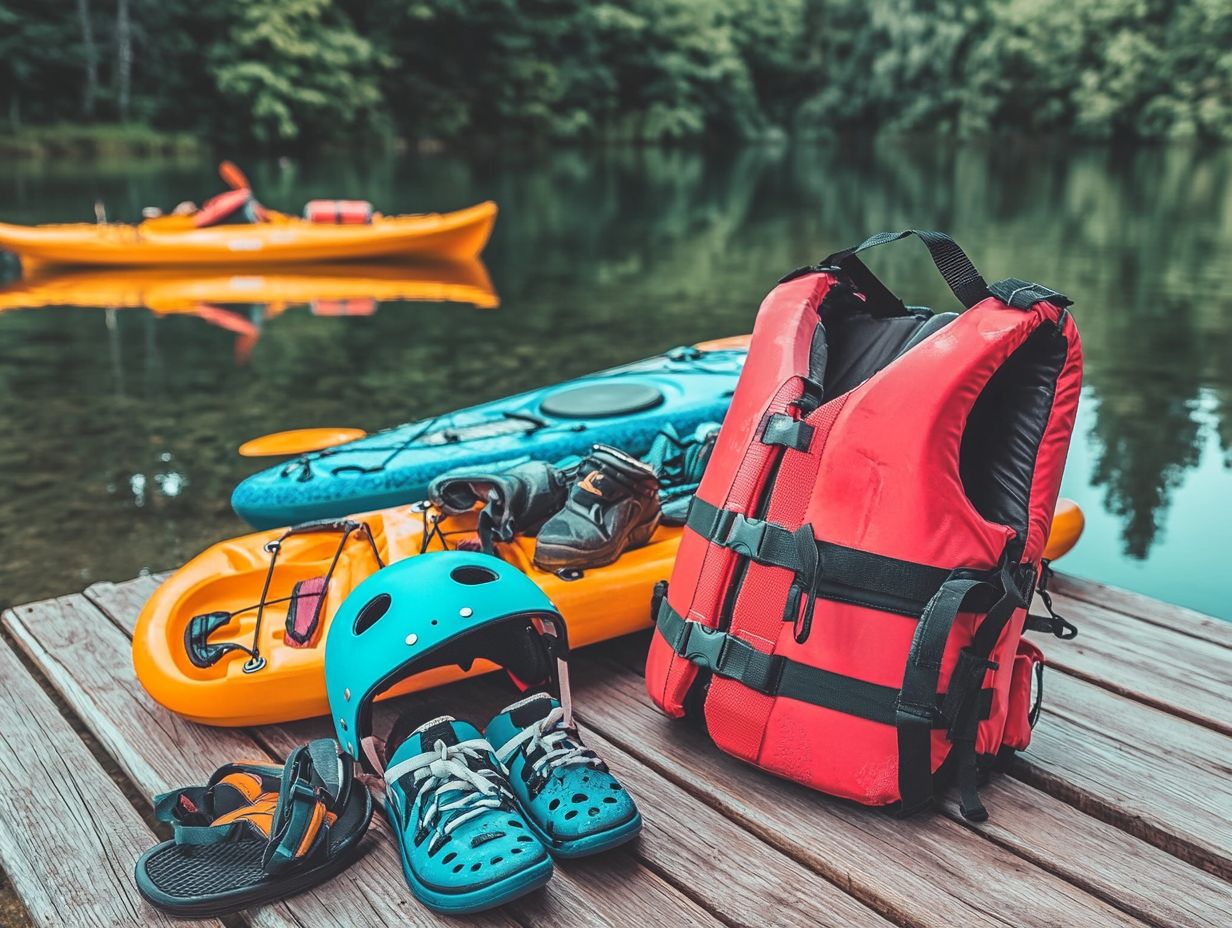
Life jackets and personal flotation devices (PFDs) are essential elements of water safety, expertly designed to keep you afloat during emergencies. In fact, they re often required by U.S. Coast Guard regulations, underscoring their importance.
These vital safety tools come in various types to suit your needs:
- Type I: Ideal for offshore use, providing maximum buoyancy.
- Type II: Tailored for near-shore activities.
- Type III: The go-to choice for recreational water sports, thanks to its comfort.
There are also specialized options like inflatable or hybrid PFDs, catering to specific preferences and situations. When choosing the right life jacket, consider factors such as your age, weight, intended activities, and local regulations to ensure both compliance and safety.
The U.S. Coast Guard plays a pivotal role in setting the standards these devices must meet, ensuring they deliver effective safety in aquatic environments.
Gear up today and make your water adventure safe and fun!
Protective Clothing and Footwear
Protective clothing and suitable footwear are essential for your comfort and safety while diving into water sports. This is especially true when you re up against unpredictable weather conditions.
Selecting the right gear can enhance your enjoyment on the water. For instance, wetsuits provide thermal protection, which keeps your body warm in cold water. On the other hand, drysuits create an airtight barrier against water, making them perfect for chillier environments. To learn more, check out our guide on how to choose the right water sports gear.
Don t overlook the importance of non-slip footwear; it s your best defense against slips and falls on wet surfaces, which can be quite perilous. Check weather forecasts to choose the right clothing to ensure you remain protected and comfortable, no matter how swiftly conditions change.
Effective communication and navigation devices, like VHF radios and cellphones, are absolutely essential for ensuring your safety during water sports. They enable you to call for help in emergencies when every second counts.
Various visual and sound signaling devices can significantly enhance safety communication on the water. Items such as flags or flashlights can relay important messages to those nearby, while horns and whistles serve as effective signals for distress or alerting others to potential hazards.
To maximize their effectiveness, keep these devices within easy reach and use them according to best practices. Make sure your visual signals are clearly visible and that you use sound devices judiciously to avoid unnecessary confusion.
This approach boosts your safety and creates a secure environment for everyone enjoying water sports.
Choosing the Right Safety Gear for Your Activity
Selecting the appropriate safety gear for your water activities is essential. It not only keeps you safe while boating and ensures compliance with regulations but also enhances your overall enjoyment while out on the water.
Factors to Consider
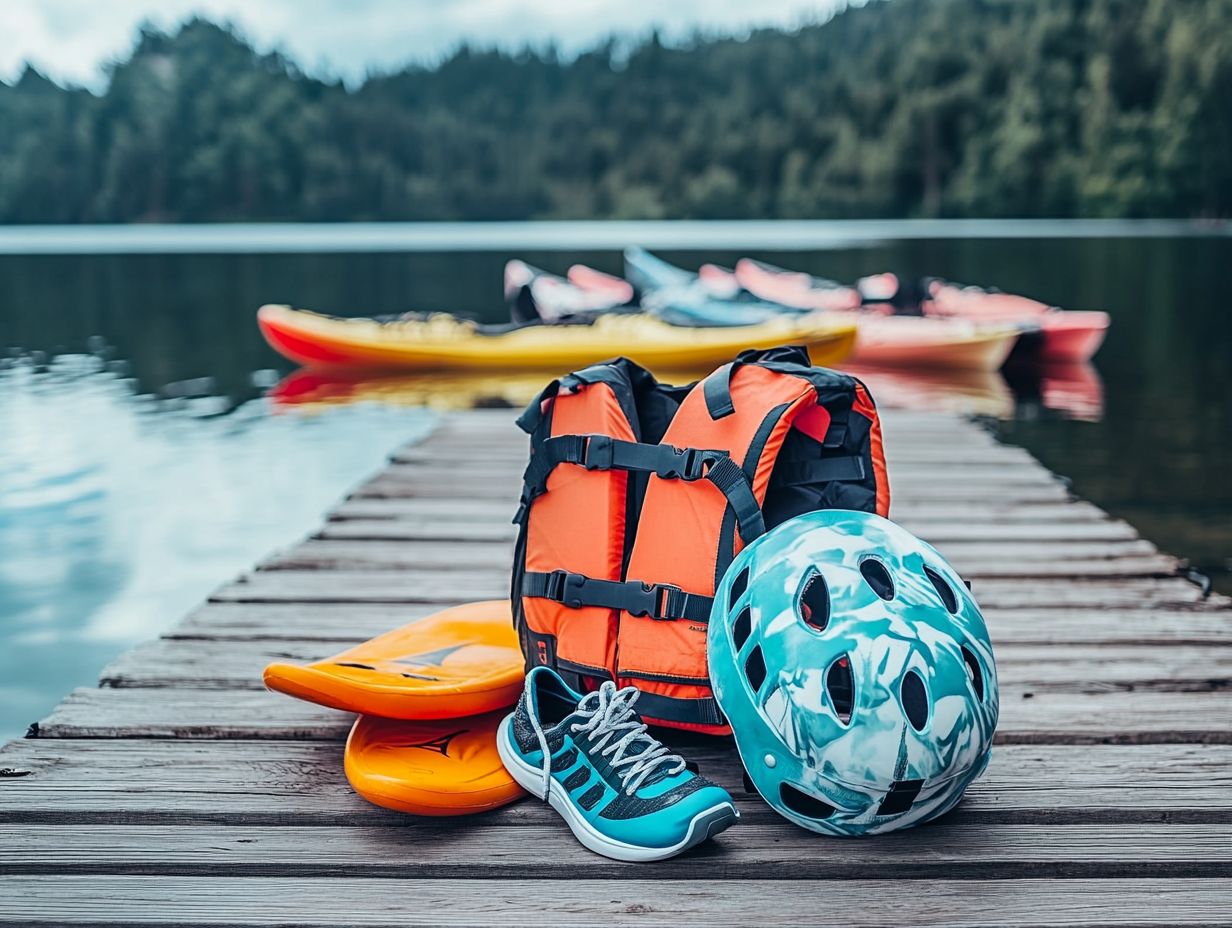
When selecting safety gear, various factors come into play. Consider the type of activity, the weather conditions, and the importance of regular equipment maintenance.
Your choice of safety gear should be adaptable, responding to shifting weather patterns that can greatly influence your safety. For example, when rain is in the forecast, you’ll want waterproof gear. On the other hand, extreme temperatures might call for extra insulation or enhanced ventilation. Additionally, it’s important to know what to know about water sports safety gear to ensure you’re fully prepared.
Different activities, like rock climbing or cycling, have unique safety requirements that you can t afford to overlook. Don t wait regular maintenance can save your life! Ensure your equipment is always in peak condition to prevent failures that could lead to accidents.
By keeping your gear updated and well-maintained, including regular checks of visual signaling devices and sound signaling devices, you enhance your performance and gain invaluable peace of mind while tackling physically demanding pursuits.
Maintaining and Using Safety Gear Properly
Ensuring proper maintenance and usage of your safety gear is crucial for its effectiveness and reliability, especially in emergency situations where every second matters.
Taking the time to care for your equipment can make all the difference when it counts.
Proper Care and Maintenance
Proper care and maintenance of your safety gear, like life jackets and personal flotation devices, are essential for ensuring their longevity and effectiveness when you need them the most.
Regularly inspecting these vital items is crucial, as it allows you to catch any signs of wear, damage, or mildew that could compromise their functionality. It s wise to wash your life jackets and flotation devices with mild soap and warm water after each use, especially if they ve been exposed to saltwater or chlorine. Storing them in a cool, dry place away from direct sunlight will go a long way in preserving their materials and colors.
During your routine inspections, check the buckles, straps, and reflective parts. This small step can prevent unexpected failures during those critical moments on the water.
Using Gear in Emergency Situations
Knowing how to effectively use safety gear in emergencies, such as a fire extinguisher or a cellphone to call for help, can be the difference between life and death. This highlights the critical importance of proper training and awareness.
Imagine you’re kayaking and suddenly capsizing, or you take a tumble from a jet ski. Understanding how to react swiftly in these moments can save lives.
Common scenarios in water sports, like unexpected weather changes or mechanical failures, remind us of the vital role safety gear plays. This includes top water sports gear for kids.
- Life jackets that fit snugly
- Signaling devices like whistles or flares to attract attention
- Visual aids such as reflective clothing to ensure you remain visible in low-light conditions
In emergencies, staying calm and using these tools can enhance your communication with rescuers. This also boosts your personal safety, ultimately minimizing risks in high-pressure situations.
Frequently Asked Questions
What are the essential safety gear for water sports?
The essential safety gear for water sports includes life jackets, helmets, whistles, first aid kits, and waterproof safety bags.
Do I need to wear a life jacket for all water sports?
Yes, it is highly recommended to wear a life jacket for all water sports, regardless of your swimming ability. This can save your life during an accident.
Why is a helmet important for water sports?
A helmet protects your head from impacts with rocks, waves, or other objects in water sports. It can prevent serious injuries, especially in activities like whitewater rafting and kayaking, where throwable flotation devices may also be necessary.
What should be included in a first aid kit for water sports?
A first aid kit for water sports should include bandages, antiseptic wipes, gauze pads, adhesive tape, pain relievers, and any specific medication you may need. It’s also crucial to have a manual on treating common injuries.
Are there any specific safety gear requirements for different water sports?
Yes, different water sports may have specific gear requirements. For example, snorkeling requires a snorkel mask, while surfing needs a leash and wax. Make sure to research the recommended safety gear for your specific activity.
Can I rent safety gear for water sports?
Yes, many rental companies offer safety gear as part of their equipment. However, it is recommended to bring your own gear that fits well and is in good condition for optimal safety.
Act now! Being prepared can save lives in an emergency. Gather your safety gear and consider taking a safety course today!

